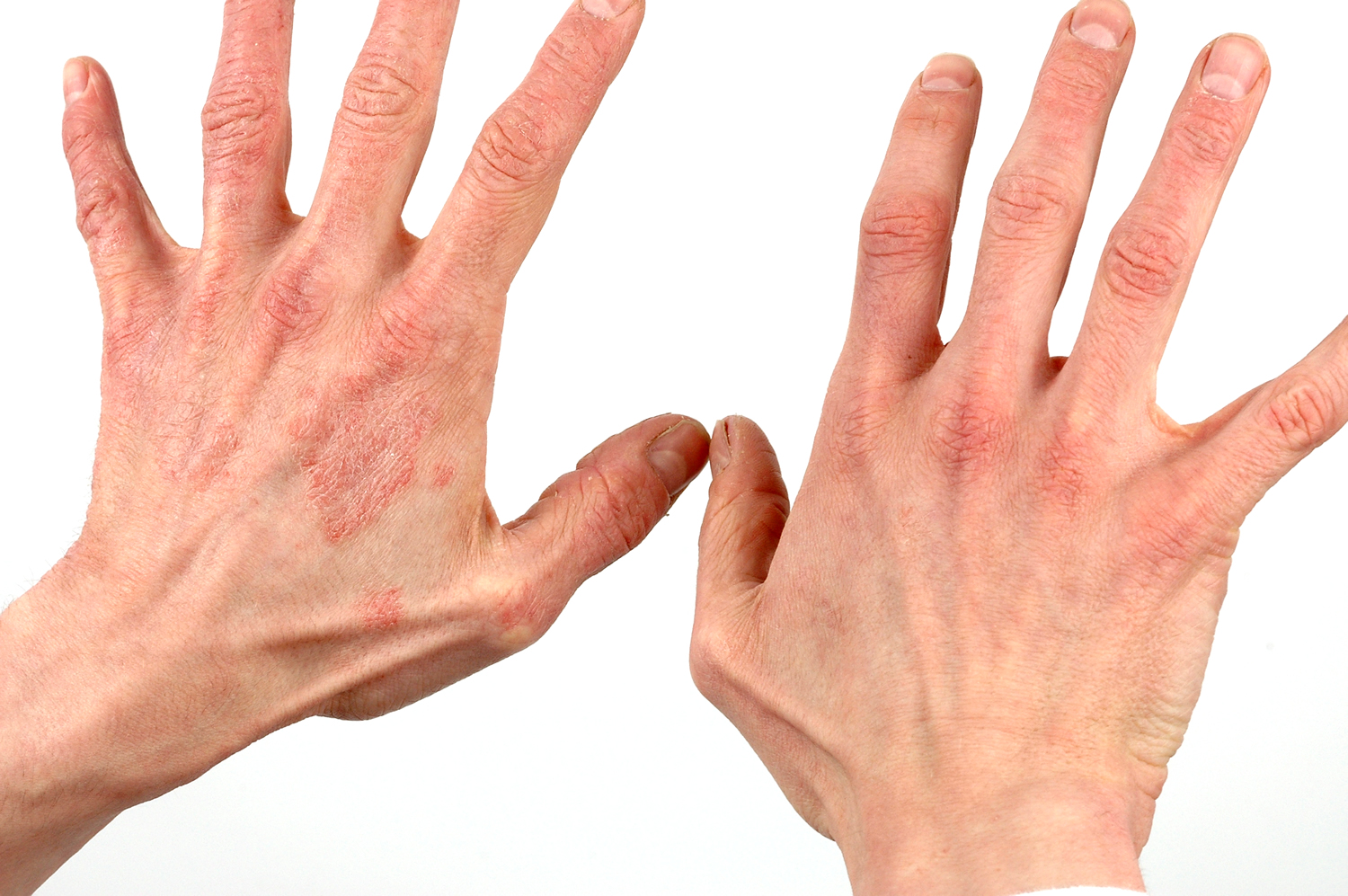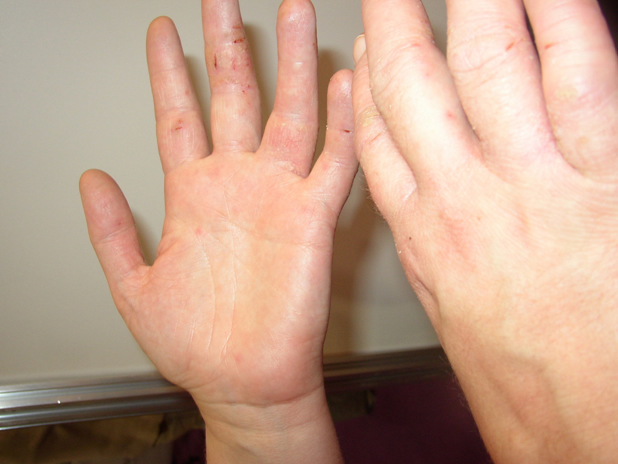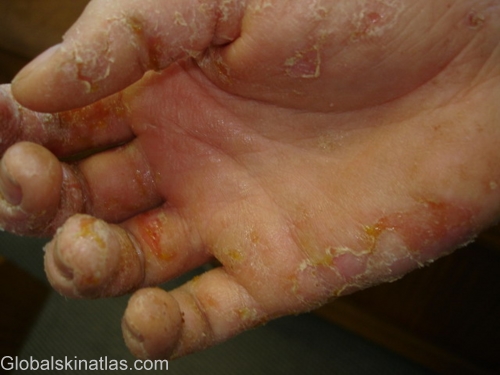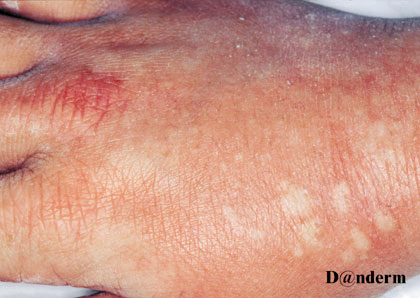Sensitisers and Irritants
Sensitisers and Irritants: an Overview
A sensitiser is a chemical or material that can produce an allergic response following exposure. Sensitisation is an immunological response following exposure to a sensitiser. Once sensitised, individuals can have severe reactions to further exposure, even in small amounts. In the most extreme cases, after respiratory or skin exposure, individuals may develop asthma and/or dermatitis respectively. Contact dermatitis can also be caused by exposure to irritant materials. Severe irritants can cause immediate effects. More frequent exposure to milder irritants (including soaps and detergents) may be required before adverse effects are noticed. If chemical sensitisers are being used, or if a user of irritant materials has an existing condition such as atopic eczema or asthma, health monitoring may be required.
Sensitisation
Respiratory sensitisation is characterised by:
- recurring sore or watering eyes;
- recurring blocked or running nose;
- bouts of coughing;
- chest tightness;
- wheezing (or a persistent history of chest problems).
Skin sensitisation is most commonly manifested as dermatitis or eczema, characterised by:
- skin redness or soreness;
- itching;
- rash;
- skin cracking or peeling.
The images below are from the HSE website and show some examples of the appearance of contact dermatitis (from top to bottom, left to right: dermatitis showing reddening of skin; allergic contact dermatitis; allergic contact dermatitis; contact urticaria from latex gloves):
 |  |
 |  |
The symptoms and diagnosis of contact dermatitis and atopic dermatitis are described in more detail on the NHS choices website.
Known Sensitisers
- Chemicals that are known to be sensitisers have one of the following H phrases in the safety data sheet:
- H334, may cause allergy or asthma symptoms or breathing difficulties if inhaled;
- H317, may cause an allergic skin reaction.The following GHS pictogram is used for serious health hazards (including, but not limited to, sensitisers):

- The proteins in natural rubber (latex) have the potential to produce allergic reactions leading to asthma and contact dermatitis. The use of latex gloves should therefore be avoided, and the use of powdered or high protein latex gloves is strictly forbidden in Chemistry.
- In addition, Schedule 6 of the COSHH legislation (2002) indicates that medical surveillance is appropriate for the use of the following:
- vinyl chloride monomer, in manufacture, production, reclamation, storage, discharge, transport, use or polymerisation;
- nitro or amino derivatives of phenol and of benzene or its homologues, in the manufacture of nitro or amino derivatives of phenol and of benzene or its homologues and the making of explosives with the use of any of these substances;
- potassium or sodium chromate or dichromate, in manufacture;
- Ortho-tolidine and its salts. Dianisidine and its salts. Dichlorobenzidine and its salts, in manufacture, formation or use of these substances;
- auramine. Magenta, in manufacture;
- carbon disulphide. Disulphur dichloride. Benzene, including benzol. Carbon tetrachloride. Trichlorethylene, processes in which these substances are used, or given off as vapour, in the manufacture of indiarubber or of articles or goods made wholly or partially of india rubber;
- pitch, in manufacture of blocks of fuel consisting of coal, coal dust, coke or slurry with pitch as a binding substance.Please bear in mind that the classification of some of these materials may have changed since 2002, and some of these materials are irritants (not sensitisers) with a history of causing irritant contact dermatitis. Other potential sensitisers and irritants are decribed in the appendix (page 7) of HSE Guidance Note 24 (Medical Aspects of Occupational Skin Disease). The website of the European Chemicals Agency (ECHA), where data from many suppliers are agglomerated, is a useful resource for checking up to date information.
Planning Work with Sensitisers and Irritants
At the planning stage, alternative protocols should be explored to avoid (or minimise) the use of sensitisers and irritants. If the use of these materials is unavoidable, measures for handling them safely need to be considered in the risk and COSHH assessments for the process.
Risk and COSHH assessments should identify the control measures to minimise the likelihood of exposure to sensitisers and irritants. The need for a separate risk assessment for the use of asthmagens is described in the Chemistry Safety policy. In most cases in Chemistry, the use of local exhaust ventilation (e.g. fume hoods) minimises the likelihood of respiratory exposure. Exposure to the skin is controlled by using the appropriate working practices or the use of personal protective equipment, including gloves.
Risk assessments must take into account whether surveillance is required, considering the toxicity of the material (e.g. sensitiser vs irritant, exposure limits etc), the scale and frequency of use, suitable control measures, and whether the user has an existing condition. Existing conditions that should be considered include:
- atopic eczema;
- urticaria;
- rhinitis;
- any other allergies, including known triggers for anaphylaxis;
- asthma;
- hay fever;
- chronic obstructive pulmonary disease (COPD).
Those planning work involving chemicals are strongly encouraged to make any of the above conditions known to their line manager or supervisor before work commences in order that the appropriate control measures can be identified and health surveillance arranged if required.
Health Surveillance
Health surveillance is undertaken by Occupational Health. If, following the risk assessment, it is considered that health surveillance is needed, or if there is any doubt, Mrs Louise Huscroft in Occupational Health should be contacted for further advice (Tel. 0191 334 2657).
More information on health surveillance is available on the HSE website.
Anyone who experiences any form of adverse reaction after using chemicals (including detergents and other cleaning materials, as well as research chemicals) should inform their line manager and/or Occupational Health.
Other Things to Watch Out For
- It is good practice to routinely inspect your hands for any evidence of dermatitis (i.e. any of the symptoms in the Sensitisation section above). If you suspect that you have symptoms, consult your supervisor or line manager and notify Occupational Health.
- Materials other than sensitisers may also require health surveillance and/or monitoring (i.e. the taking of measurements to show that control measures are adequate). Examples include materials with high toxicity that produce cumulative effects, such as carcinogens, toxic metals and respirable crystalline silica.In Safety Data Sheets, data on workplace exposure limits (WELs), if available, will be found in Section 8. In the Chemistry Department, the use of local exhaust ventilation ensures that WELs are not exceeded for many chemicals. However, for cumulative poisons, poisons that can cross the skin, or in cases where the WEL is very low, the risk assessment should consider the need for monitoring, and Occupational Health contacted if surveillance/monitoring is needed. A comprehensive guide to workplace exposure limits is available from the HSE (document EH40, 2005; please bear in mind that in many cases, exposure limits are likely to have been revised since 2005).
Contacts
Occupational Health (Mrs Louise Huscroft, Tel. 42657)
